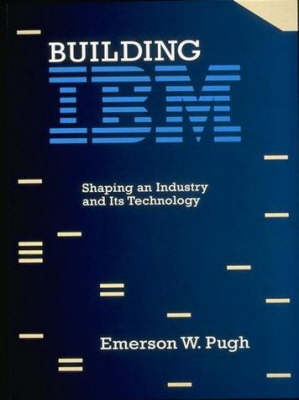
Building IBM
MIT Press (Verlag)
978-0-262-16147-3 (ISBN)
- Titel ist leider vergriffen;
keine Neuauflage - Artikel merken
This text tells the history of IBM - how it was formed, how it grew and how it shaped and dominated the information processing industry. It presents material about the company in the period before 1945 as well as an interpretation of the post-war era. Granted unrestricted access to IBM's archival records the author attempts to dispel many widely held myths about IBM and its leaders and provides new insights on the origins and development of the computer industry. The book begins with Herman Hollerith's invention of punched-card machines used for tabulating the US Census of 1890, showing how Hollerith's inventions and the business he established provided the primary basis for IBM. It describes why Hollerith merged his company in 1911 with two other companies to create the Computing-Tabulating-Recording Company, which changed its name in 1924 to International Business Machines. Thomas J. Watson, who was hired in 1914 to manage the merged companies, built Hollerith's business into a virtual monopoly of the rapidly growing punched-card equipment business. The inside story of the transfer of authority from the senior Watson to his older son, Thomas J. Watson Jr., and the company's rapid domination of the computer industry occupy the latter half of the book.
In two final chapters, Pugh examines conditions and events of the 1970s and 1980s and identifies the underlying causes of the severe problems IBM experienced in the 1990s.
Hollerith - inventor and entrepreneur - getting started, addressing the census problem, the first practical test, obtaining patent protection, entrepreneurial setbacks, winning the census business, commercial applications, entering foreign markets; origins of IBM - business stress, battling the Census Bureau, the proposed merger, reaping the rewards; Watson - a man with a mission - a gifted salesman, a lesson in antitrust law, the man; building an engineering organization - competition emerges, hiring creative engineers, obtaining crucial patents, a drop in revenue, managing engineers, internal competition, the IBM card; responding to the Great Depression - coupling engineering to manufacturing, emphasis on education, research for current needs, quality and production control, methods research, hiring good people; support for academic research - educational testing studies, an innovative science teacher, automatic computation, the Mark I computer; research for patents and devices - a prodigious inventor, pioneering in electronics, building electronic calculators, contacting outside researchers; World War II activities - organizing for war, mobile machine record units, teleprocessing with punched cards, the radiotype, deciphering enemy codes, a trip to remember, lusting for electronics, the navy's task, a commercial venture; future demands - lessons from NCR, forming a committee, a department and its demise, new leadership, the chief engineer; preparing for peace - planning for product improvements, printer research, emphasis on electronics, the SSEC - a supercomputer, the Watson laboratory; government-funded competition - sounding the alarm, the ENIAC, stored-programme computers, promoting the concept, commercial ventures, provocative terminology; IBM's initial response - grooming two sons, assignments in electronics, getting started in Poughkeepsie, a commercial electronic computer, the UNIVAC threat, applied science representatives, supercomputer strategies; Watson, Jr., takes charge - choosing team members, the defense calculator, measures of success, the 700 series, the most popular computer; programming computers - some early efforts, sharing information and programmes, customer support, toward high level languages, the birth of FORTRAN, COBOL arrives; an air defense system - the whirlwind computer, the new mission, a better memory, selecting IBM, working together, the SAGE system, programming, and assessment; chasing new technologies - a new laboratory, inventing disk storage, the solid-state challenge, competition in supercomputers, project stretch, reorganizing research; legacy - naming the industry, some early business practices, patent policies, dominating the industry, settling the antitrust suit, domestic competition, the World Trade Corporation, competition abroad. (Part contents).
| Erscheint lt. Verlag | 3.5.1995 |
|---|---|
| Zusatzinfo | 65 |
| Verlagsort | Cambridge, Mass. |
| Sprache | englisch |
| Maße | 152 x 229 mm |
| Gewicht | 749 g |
| Themenwelt | Geschichte ► Teilgebiete der Geschichte ► Kulturgeschichte |
| Mathematik / Informatik ► Informatik | |
| Wirtschaft ► Betriebswirtschaft / Management ► Wirtschaftsinformatik | |
| ISBN-10 | 0-262-16147-8 / 0262161478 |
| ISBN-13 | 978-0-262-16147-3 / 9780262161473 |
| Zustand | Neuware |
| Informationen gemäß Produktsicherheitsverordnung (GPSR) | |
| Haben Sie eine Frage zum Produkt? |
aus dem Bereich


